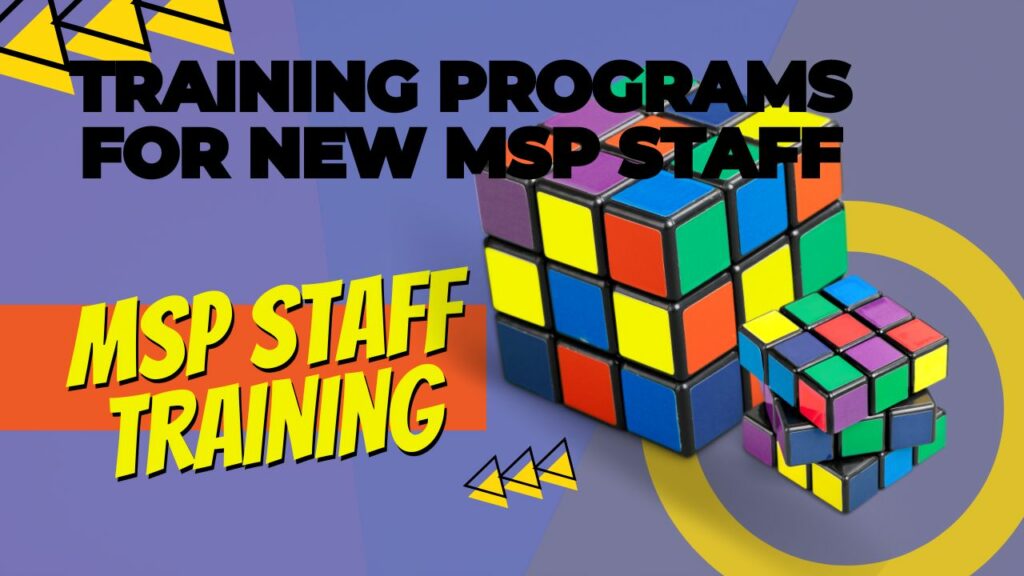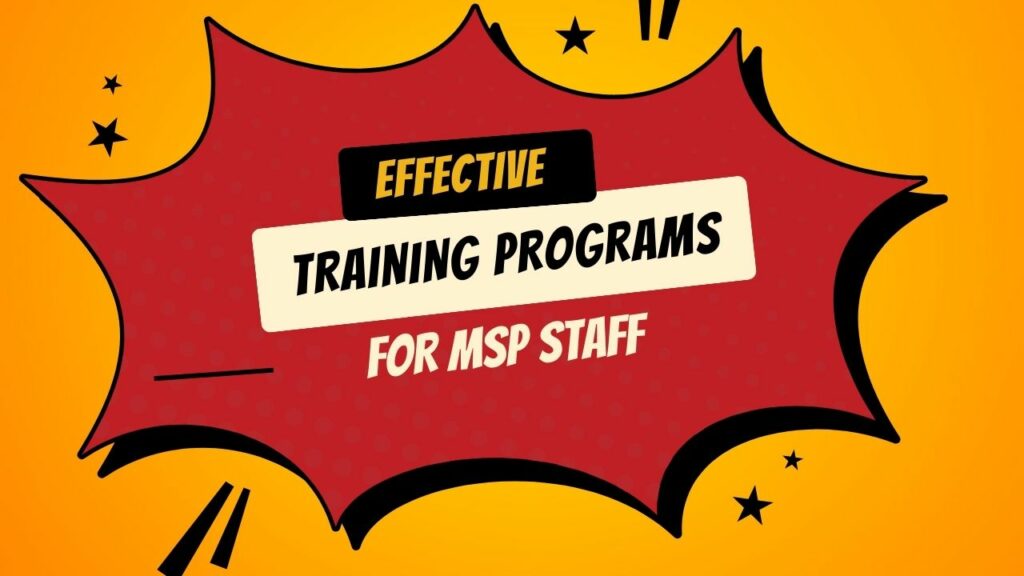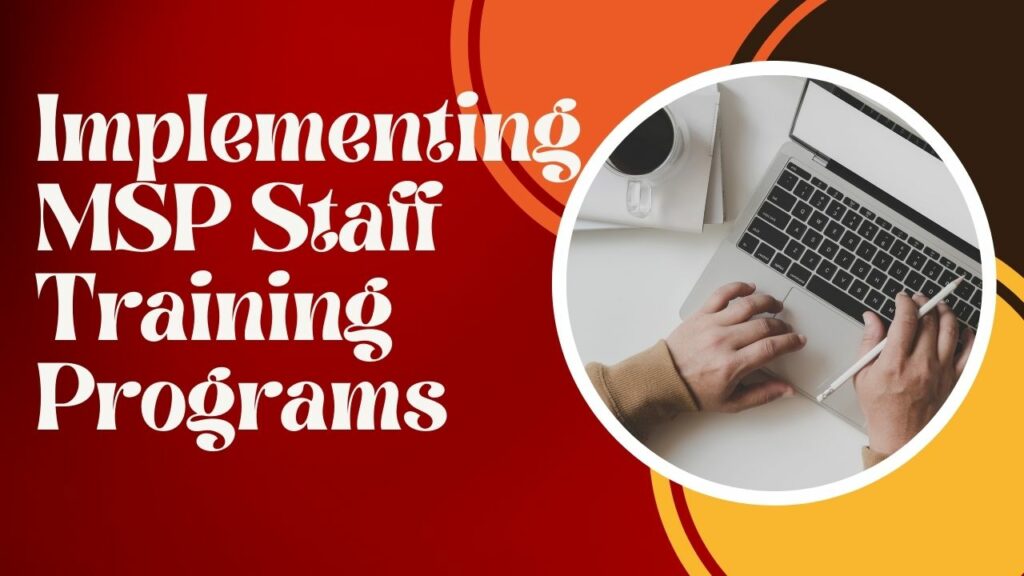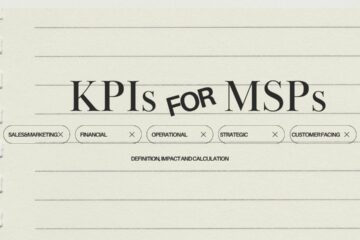For MSP companies, the ability to adapt to new technologies and meet ever-changing client expectations is crucial. At the heart of this adaptability is the competence of the staff, which hinges significantly on the effectiveness of training programs. Effective training programs not only equip MSP staff with necessary technical skills but also enhance their problem-solving and customer service abilities, monumental for maintaining a competitive edge and fostering client loyalty.

The importance of effective training programs in the MSP industry.
Despite the recognized importance, many MSPs face a common challenge: a significant skill gap among their staff. This gap can manifest as inefficiencies, service delivery errors, and ultimately, customer dissatisfaction, impacting the MSP’s ability to grow and thrive. It’s essential for MSPs to recognize these skill gaps promptly and address them through targeted training efforts.
Overview of the impact of skill gaps on service delivery and customer satisfaction.
This article explores the various uses of training programs in the MSP industry, highlighting strategies for identifying skill gaps and designing training solutions that are both effective and engaging.
MSPs like yours can create an environment of continuous improvement and learning through a blend of different simple approaches!
Identifying Skill Gaps in Your MSP Team
- Methods for Assessing Skills and Identifying Needs. Surveys, interviews, and performance reviews to gather data. Analyzing service delivery challenges to pinpoint skill deficiencies.
- Collaborating with Staff to Identify Learning Objectives. Involving team members in the training process for tailored learning paths.
Methods for Assessing Skills and Identifying Needs
One effective method to identify skill gaps within MSP teams is through surveys, interviews, and performance reviews. These tools can gather comprehensive data about staff competencies and areas requiring improvement. To ensure that feedback is honest and constructive, it’s crucial to maintain anonymity and confidentiality throughout the process.
Another critical approach is analyzing service delivery challenges to pinpoint skill deficiencies. By examining customer complaints, service tickets, and performance metrics, MSPs can identify specific skills that are lacking. This data-driven analysis helps in focusing training efforts where they are most needed, thereby directly enhancing service quality.
KPIs for MSP Companies
You can track the most important KPIs for your MSP. Among them, KPIs that track employee performance can be very helpful in bridging the skill gap. Metrics like task completion rate, quality of work, or learning and development can give valuable insight into needed improvement.
Learn more about the topic in HubStaff’s article.
Collaborating with Staff to Identify Learning Objectives
Involving team members in the training development process is beneficial. When staff participate in identifying learning objectives, they are more likely to engage with the training program and apply what they learn. This collaborative approach ensures that training paths are tailored to the actual needs of the staff, increasing the effectiveness of the training programs.
Custom e-learning modules focusing on advanced troubleshooting techniques, supplemented with real-life scenarios and quizzes.
Interactive workshops aimed at enhancing customer communication and service handling skills.
The concepts of custom e-learning modules focusing on advanced troubleshooting techniques supplemented with real-life scenarios and quizzes, as well as interactive workshops aimed at enhancing customer communication and service handling skills, are well-supported by real-world strategies discussed in the sources you provided.
For instance, the TrainerCentral article discusses the importance of online training platforms in bridging the skills gap in today’s workforce by providing accessible, flexible, and customizable training options. It emphasizes the use of interactive features like quizzes and real-world scenarios to enhance learning engagement and effectiveness.
These methods align with modern training approaches that leverage technology to improve the depth and retention of learning among employees. By using online platforms, MSPs can create training modules that are specifically tailored to the needs of their staff, incorporating practical exercises that simulate real-life challenges they might face in their roles.
Designing Effective Training Programs for MSP Staff
- Principles of Adult Learning and Their Application. Tailoring content and delivery methods to adult learners.
- Blended Learning Approaches. Combining online learning, in-person training, and hands-on experience.
- Customizing Training Content. Developing programs specific to MSP tools, technologies, and processes.

Principles of Adult Learning and Their Application
Adult learners have unique needs and preferences compared to traditional students. Effective training programs for MSP staff must be designed with these principles in mind. Tailoring content and delivery methods to adults means focusing on relevance and direct applicability to their roles. This involves integrating real-world problems into learning scenarios, which not only makes the training more engaging but also more memorable. For MSP staff, this could mean using actual case studies from the MSP’s own experiences or common scenarios in MSP environments.
Blended Learning Approaches
Blended learning combines online digital media with traditional classroom methods. This approach offers flexibility and enhances learning experiences, providing MSP staff with the opportunity to learn at their own pace and on their own schedule. A typical blended learning program might include self-paced online modules, periodic in-person workshops for more complex topics, and regular hands-on sessions which help to solidify the online components through practical application.
Customizing Training Content
Developing training programs that are specific to the tools, technologies, and processes used by an MSP is crucial. Customized content ensures that staff are not just learning general IT skills but are getting trained on the exact systems and practices they will encounter in their daily work. This customization extends to creating modules for specific software, hardware, or problem-solving techniques that are critical to the MSP’s operations.
Leveraging Technology in Training
- Online Learning Platforms and Resources. Utilizing e-learning tools for flexible, self-paced learning.
- Simulation and Virtual Labs. Providing practical experience with virtual environments.
Online Learning Platforms and Resources for MSPs
Technology plays a pivotal role in modern training environments. By utilizing e-learning tools, MSPs can offer flexible, self-paced learning options that cater to the individual needs of their staff. These platforms can host a variety of learning materials such as videos, quizzes, and interactive content, making it easy for staff to engage with and absorb the necessary knowledge at their convenience. Platforms like LearnWorlds or Litmos may be helpful.
Simulation and Virtual Labs
Practical experience is crucial for effective learning, especially in the technical fields involved in MSP work. Simulation tools and virtual labs, like sandboxes, allow staff to practice their skills in a controlled, risk-free environment. These technologies can simulate real-world IT environments where staff can practice troubleshooting, server management, or cybersecurity protocols without the fear of impacting actual operations. This not only enhances learning but also builds confidence and competence.
Here are a couple of sources that discuss simulation tools and virtual labs which can be directly applied to MSP training:
Skillable: Skillable offers virtual training labs also known as hands-on labs, which are non-production environments designed for real-world interactive learning experiences. These labs are used extensively in corporate training, allowing learners to complete scenarios with the tools and applications they will use on the job. This makes them particularly suitable for MSPs looking to train staff in a risk-free setting.
Immersive Labs: This platform offers realistic simulations of current threats, which is essential for testing and improving response readiness in cybersecurity. Immersive Labs combines their innovative platform with extensive real-world experience, providing close to real incident replication in a safe virtual environment. This feature is crucial for MSP staff needing to practice cybersecurity protocols without the risks associated with real cyber threats. Further details can be found on their site here.
Role of Continuous Learning and Development
- Fostering a Culture of Continuous Improvement. Encouraging ongoing learning and skill development.
- Updating Training Programs Regularly. Keeping pace with technological advancements and industry trends.
Fostering a Culture of Continuous Improvement
The dynamic nature of the IT and MSP sectors makes continuous learning essential. Encouraging ongoing learning and skill development among staff can drive innovation and adaptability. A culture of continuous improvement ensures that MSPs remain competitive and responsive to changes in technology and market demands. Sources like Forbes and Harvard Business Review frequently discuss the importance of fostering a learning culture within organizations to drive business success.
Updating Training Programs Regularly
As technology evolves, so too should the training programs designed to support it. Regular updates to training content are crucial to keep pace with technological advancements and industry trends. This ensures that the workforce is always equipped with the latest skills and knowledge necessary to meet changing demands. Publications like those in TechTarget’s knowledge base provide insights on how MSPs can stay current with industry practices and integrate these into training programs.
Measuring the Effectiveness of Training Programs
- Setting Clear Metrics for Success. Defining what successful outcomes look like for training initiatives.
- Gathering Feedback and Making Adjustments. Continuous improvement based on participant feedback and performance metrics.
Setting Clear Metrics for Success
Defining what successful outcomes look like for training initiatives is key to measuring their effectiveness. Clear metrics might include improved job performance, reduced error rates, or enhanced customer satisfaction scores. These indicators help organizations assess whether their training investments are yielding the intended benefits. The Association for Talent Development (ATD) offers extensive resources on how to define and measure training success.
Gathering Feedback and Making Adjustments
Continuous improvement of training programs is not possible without regular feedback from participants. Collecting and analyzing feedback allows organizations to identify areas for improvement and adjust training methods accordingly. Performance metrics and participant feedback can guide the refinement of training content and delivery methods, ensuring they remain relevant and effective. Feedback techniques and their importance in training programs are often detailed in journals like ‘Training Magazine‘, which provides strategies for integrating effective feedback mechanisms.
Overcoming Challenges in MSP Staff Training
- Addressing Common Obstacles in Training Delivery. Time constraints, engagement issues, and resource limitations.
- Strategies for Motivating Staff to Engage in Learning. Incentives, recognition, and career development opportunities.

Addressing Common Obstacles in Training Delivery
Training delivery in MSP environments often encounters several challenges, such as time constraints, engagement issues, and resource limitations. These obstacles can significantly hinder the effectiveness of training programs.
To address these issues:
Time Constraints: MSPs can offer flexible learning options such as microlearning sessions, which are short, focused segments that fit easily into the busy schedules of staff members.
Engagement Issues: Interactive and gamified learning experiences can increase engagement levels by making learning more enjoyable and dynamic.
Resource Limitations: Utilizing cost-effective online training tools and open educational resources can help mitigate financial constraints.
Sources like Forbes and EdTech Review provide insights on overcoming these common challenges in training environments.
Strategies for Motivating MSP Staff to Engage in Learning
Motivating staff to participate actively in training initiatives is crucial for the success of any learning program. Effective strategies include:
Incentives: Offering bonuses, additional leave, or other rewards for successful training completion.
Recognition: Public acknowledgment of staff achievements in learning can boost morale and encourage others.
Career Development Opportunities: Linking training completion to career advancement within the MSP can make learning more attractive to staff.
Final Words on Effective MSP Staff Training Programs
In conclusion, addressing the skill gap through effective training programs is crucial for MSPs to maintain high service quality and client satisfaction. By tailoring training to adult learning principles, leveraging technology for blended learning, and promoting a culture of continuous development, MSPs can ensure their staff are competent and confident in their roles. Regularly updating training programs and measuring their effectiveness are essential steps to adapt to industry changes and meet evolving client demands. The ongoing commitment to overcoming training challenges and motivating staff will further enhance these efforts, leading to sustained organizational success and growth.



0 Comments